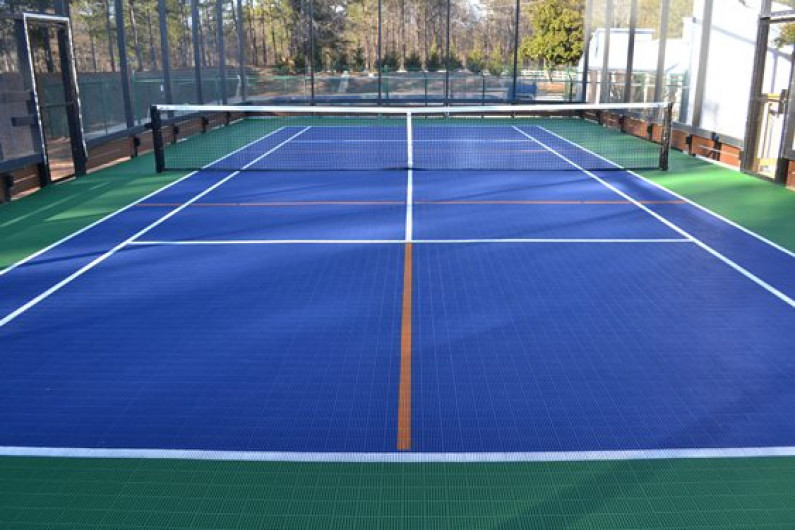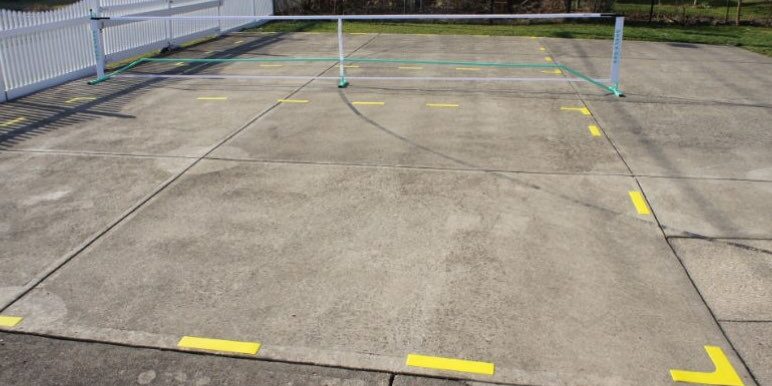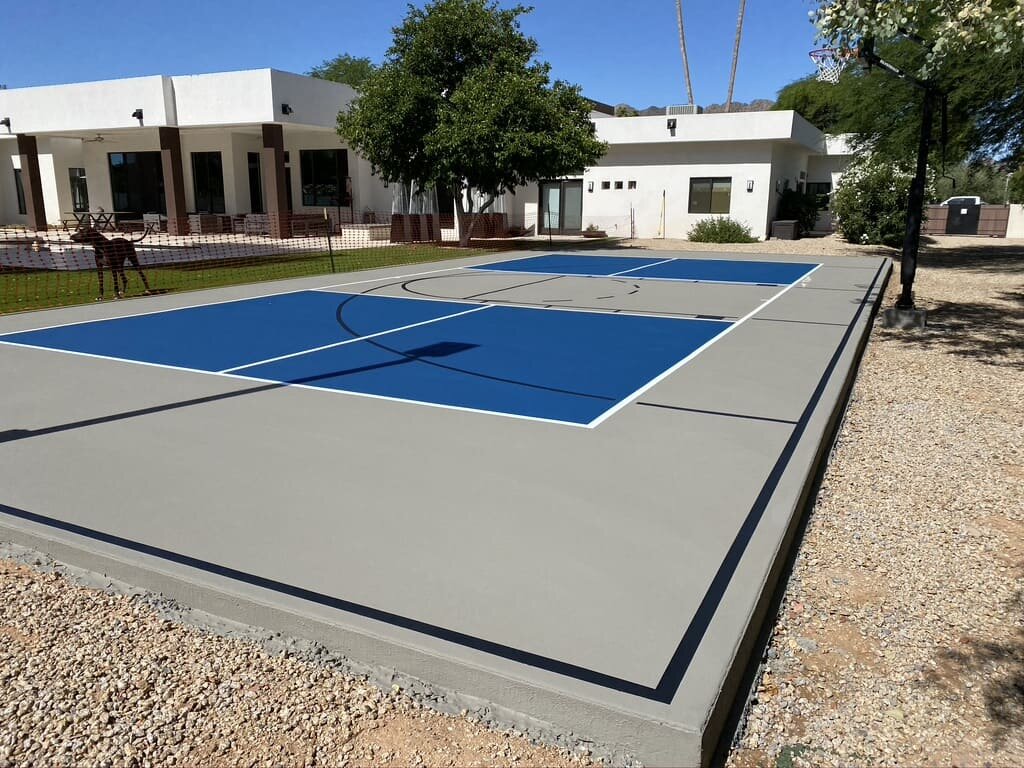A Comprehensive Overview to Designing the Perfect Pickleball Court for All Skill Levels
Designing a pickleball court that accommodates gamers of varying skill levels demands a multifaceted method, including crucial components such as court dimensions, surface area materials, and accessibility features. The equilibrium in between capability and safety and security is paramount, as is the production of an inviting setting for both viewers and individuals. With the appropriate design selections, one can cultivate an appealing ambience that promotes satisfaction and ability advancement. Pickleball court contractor. Nevertheless, the details included in achieving this balance are typically forgotten. What certain considerations must be focused on to ensure an effective application?

Recognizing Court Dimensions
Comprehending the measurements of a pickleball court is critical for both developers and players, as these requirements make certain a consistent and reasonable playing experience. A conventional pickleball court determines 20 feet broad by 44 feet long for both singles and doubles play. The court is divided right into 2 equivalent fifty percents by a web that stands 36 inches high at the sidelines and 34 inches at the facility.
Key features of the court include the non-volley zone, generally described as the "cooking area," which prolongs 7 feet from the web on both sides. This location is vital for regulating player movement and volleying, making sure strategic play. Furthermore, the solution areas on each side of the court are vital, gauging 10 feet broad and 15 feet deep, made to fit correct offering techniques.
Surrounding the court, an area of at the very least 10 feet need to be assigned as the security zone, permitting gamers ample space to move and protect against injuries during play. Following these measurements not just fosters fair competitors yet also promotes safety and enjoyment for all participants, making it necessary for any kind of pickleball court design.
Choosing the Right Surface Area
The choice of playing surface area for a pickleball court considerably influences the game's characteristics and gamer experience. Choosing the suitable material is essential for making sure gamer convenience, efficiency, and security. Common surface areas include asphalt, concrete, and specialized sports floor covering.
Asphalt is a popular selection because of its price and toughness. It gives a constant having fun surface area yet can be tough on joints over prolonged play. Concrete, while similar in toughness, uses very little versatility, potentially leading to raised effect on players' bodies.
For an extra cushioned experience, several centers select specialized sporting activities flooring, such as synthetic surfaces or modular ceramic tiles. These materials frequently consist of shock-absorbing homes, reducing the danger of injuries and boosting player convenience. Such surface areas can boost ball bounce consistency, which is crucial for fair play.
When choosing a surface area, take into consideration elements such as climate, maintenance needs, and the strength of play. An appropriate surface area not just boosts gameplay but also adds to the durability of the court itself. Eventually, recognizing the subtleties of different products will help in producing an ideal pickleball environment tailored to various skill degrees.
Ideal Court Layout
An optimal court layout is important for maximizing both gamer performance and viewer pleasure in pickleball. The measurements of a common pickleball court are 20 feet wide by 44 feet long for increases play, preserving a clear border that enhances gameplay. The internet, placed at 36 inches high at the sidelines and 34 inches in the center, is essential for keeping the dynamics of the video game.
Incorporating assigned locations around the court for useful site players to relocate easily is important. A minimum of 10 feet of clearance on all sides of the court is advised to avoid crashes and offer area for viewers. Furthermore, positioning plays a considerable duty; the court should ideally be lined up north-south to decrease the influence of sunlight glare on gamers during optimal hours.
Clear and noticeable court markings aid in gameplay, with contrasting shades for limits and non-volley areas that mark crucial areas for players. On the whole, a properly designed court format cultivates an interesting atmosphere for both viewers and gamers.

Accessibility Factors To Consider
When creating a pickleball court, guaranteeing accessibility for all players, consisting of those with impairments, is paramount. An attentively created court can foster inclusivity and urge participation from people of differing abilities.

Gain access to courses to the court have to likewise be meticulously planned. Guarantee that pathways resulting in the court are vast sufficient for wheelchair individuals and are furnished with ramps where essential. Signs should be large and clear enough to be check my site quickly checked out.
Additionally, seating locations must be created to enable for very easy accessibility to and from the court. This consists of supplying assigned spaces for spectators that might have flexibility obstacles.
Lastly, make certain that toilet facilities nearby meet access requirements. By thinking about these elements, you can develop a pickleball court that is inviting and usable for every person, consequently promoting a vibrant and varied area of players.
Upkeep and Upkeep
Proper upkeep and upkeep of a pickleball court are crucial for making certain optimal having fun conditions and extending the lifespan of the facility. Regular evaluations need to be conducted to determine and resolve any type of problems or wear, such as fractures in the surface area or loose netting. These problems, if left neglected, can negatively affect gameplay and safety.
Surface upkeep is critical; courts should be cleaned up frequently to remove debris, leaves, or dirt that can influence grip. For hard courts, periodic pressure washing is recommended to preserve surface stability and aesthetic appeals. If your court is constructed from softer products, such as asphalt, resurfacing or securing might be essential to safeguard versus weather-related wear.
In addition, net height and tension ought to be checked regularly, as improper setups can alter gameplay. Maintaining surrounding areas, including fencing and lighting, is equally important for ensuring a safe and satisfying atmosphere.
Final Thought
In conclusion, the design of an ideal pickleball court requires a careful method that encompasses correct measurements, appropriate surface area products, and thoughtful layout. Pickleball court contractor. Making certain access for all gamers and viewers is crucial for fostering a comprehensive setting. In addition, regular maintenance is essential for sustaining court high quality and safety and security. By adhering to these guidelines, the ideal pickleball court can be produced, promoting enjoyment and athletic development for players of differing ability degrees.
Creating a pickleball court that caters to gamers of varying skill degrees requires a multifaceted approach, including necessary aspects such as court dimensions, surface area materials, and ease of access features.Understanding the measurements of a pickleball court is important for both developers and players, as these requirements guarantee a regular and fair having fun experience.The choice of playing surface for a pickleball court considerably affects the game's dynamics and gamer experience.An optimal court this page design is essential for taking full advantage of both gamer performance and viewer satisfaction in pickleball. By sticking to these guidelines, the ideal pickleball court can be produced, advertising enjoyment and athletic development for players of varying skill degrees.